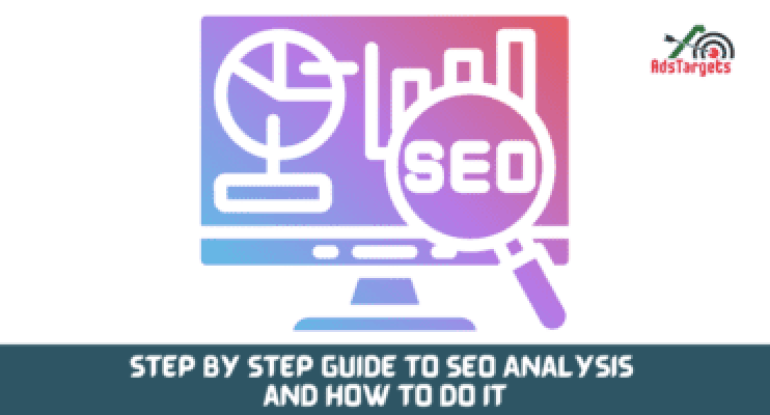SEO has become a widely adopted tool by online marketers because of its effectiveness. While the benefits are vast, not so many marketers understand how to handle this great tool to dig gold in their digital marketing efforts.
The digital landscape has changed drastically over the past few years, but SEO remains an effective and important marketing strategy that can always be fallen back to when one misses their way to marketing success.
Since top position rankings are significant to your success, having your website in these top positions on the result pages translates to more exposure for your site.
Plus, being on the first page for your targeted keywords not only helps users to link your brand with those keywords, but it instills trust since brands found on the first page are generally perceived to be more trustworthy.
The more your pages and content rank in top positions in the search engines, the more chances you have for users to see your content and connect with your brand.
To make your page and content climb to the top page, some guidelines need to be followed strictly.
These guidelines help you rearrange the site’s architecture and links to make pages within the website easier to find and navigate through.
This not only makes it painless for search engines to crawl your site and find pages but also makes it smooth for users to find information on your website as well.
In this article, I will walk you through the Step by step guide to SEO analysis and how to do them.
Table of Contents
ToggleWhat is SEO Analysis?
SEO analysis is a turning point process from an SEO perceptive. It means you could improve your website rank significantly in search results if done right.
Let me put it differently
An SEO analysis reveals all the necessary improvements on your website that you can inspect to boost your search engine ranking potential (SERPs). An analysis of your site can help you find the best places to optimize for search engine bots.
By doing an SEO analysis, you will be able to determine which parts of your SEO strategies are succeeding and identify the problems that are stopping you from climbing up in the ranking engine.
Analyzing SEO data provides you with information on how to best improve your site’s content and site technical areas, allowing you to provide a better visitor experience while showing search engines context and connections between your content and the user’s search query.
Why You Need SEO Analysis
The simple truth is that an SEO analysis is an absolute necessity if you want to rank higher, extend your reach, draw in more visitors, and score your business goals.
Rather than shooting to score your marketing goals in the thick darkness, you are making smarter choices through careful SEO analysis, which means you spend less time and money on something that will bring in positive results.
It is nearly impossible to make sound choices about increasing your site’s position in SERPs without a comprehensive SEO analysis of your website.
SEO is a long-term game almost like planting an orange seed and watering it every day, watching it go through the germination stage, the juvenile, the flowering to the fruiting stage if that makes sense. It requires a lot of time, patience, and money to begin to reap the benefits.
So before you embark on the worthwhile journey, know that there is “NO” easy way out there to do proper SEO. However, if you need my advice, I can assure you, hard work pays off over time with SEO.
What are the elements of SEO analysis?
#1. Website Tracking
The first step in any analysis is to know how much data you will be working with and what its current status is.
In your SEO analysis, here is what will be determined under website tracking:
#1. The total number of pages on the website.
#2. Total pages indexed by Google.
#3. The number of website pages excluded by Google and their reasons.
#4. Website pages with Accelerated Mobile Pages (AMP).
#5. Most important errors (broken links or links that do not open where they should).
#6. Websites that most link to the company’s website.
#7. Anchor texts with those that most link to the business.
You will be able to easily access all this data through Google Search Console.
#2. Traffic Analysis

When conducting an SEO analysis, you have to determine where the visitors who land on your website come from and the sections that attract and receive the most visits from search engines.
In many cases, brands create their websites and spend years upon years creating pages, modifying links, and other adding resources.
This means that, at the time they want to start their SEO work, brands do not know which pages are generating the bulk of the traffic to their website.
Why is knowledge of this information important?
Because if your site has 180 pages but more than 50% of the traffic comes from just 40 links, the most logical thing would be to turn and focus your efforts directly on those URLs bringing in results.
Analysis of a website with more than 8,000 links: 50% of the traffic is coming from less than 30 URLs.
What do you do in such a situation?
If your most important pages (conversion pages) are not found in these active URLs, you will have to do some SEO work to generate more traffic on the other pages of your website, the ones that are important for your business.
If, on the contrary, the bulk of your business is found in those pulling-in results, start by optimizing those. Evaluate what you want to achieve and act accordingly.
#3. keyword Analysis

With which phrases does your business want to position itself? What are the most searched terms in your industry? And with what keywords do visitors find your website?
The keyword research will allow your business, among other things:
#1. Know what expressions people use to search for the products you deal in.
#2. Determine what questions your prospective customers are asking.
#3. Find out if you have a lot of competitors to break through to reach the first page of Google.
#4. Point 1 is the most important because there are often many differences between how we think users search for our products and how they do.
Conducting keyword research lets you know when to take a different path in choosing keywords.
For example, if you are in the Estate management industry targeting visitors who are looking to own property; you may decide to target the keyword “buy apartments”
But in actual sense, the visitors are typing “apartments for sale” into the search engine search. This means you are shooting blindly into the dark with zero chances of hitting your target.
Keyword research is to the rescue, it redirects you on the right path to go to meet your target market.
In that sense, carrying out this keyword study is crucial.
There are free and paid tools to perform keyword research, you may leverage the free ones like Ubersuggest, by Neil Patel, and Google’s Keyword Planner.
There you will be able to see an approximate volume of how many searches are conducted on a chosen keyword
per month, you will know the competition that you will have when trying to reach the first page of Google if you are going with the keyword.
Also, using Google Trends can help you decide between two keywords that you want to position, determining which is the one that, at the time you are creating your content, is trending among searchers.
#4. Site Packaging
The packaging of a site is made up of three elements: the meta tags, the title tags, and the internal titles (H1, H2, H3, H4…).
The title tag is the title of a page for Google. It’s the text that displays in blue and large letters on a results page.
The meta tag is the brief description that displays below it, and the internal titles correspond to the titles and subtitles within the result page.
For a page to rank correctly, all these titles must be optimized for SEO, keeping a close relationship with the information provided within the site, since:
1. Google uses these titles as a positioning factor when making its results lists. If there you do not indicate to Google that you are providing answers to a certain question, your content will not rank, even when it is of very high quality.
2. Although descriptions are not used as a ranking factor in Google, they offer users a brief and very essential summary of the topic of your articles.
If your descriptions captivate the users, it is much more likely that you will get more clicks and, accordingly, continue to rise in Google.
Rather than perusing, users on the Internet scan, so you have very few seconds to capture the user’s attention. Therefore, you should take advantage of meta descriptions as a hook for your articles.
#5. Upload Speed
Page speed is the measurement of how fast the content on your site loads.
Google has indicated that site speed is one of the signals used by its algorithm to rank pages. And research has also shown that Google might be specifically calculating time to the first byte when it considers page speed.
Additionally, a slow page speed means that search engines can crawl fewer pages using their fixed crawl budget, and this could negatively affect your cataloging.
Page speed is also vital to user experience. Pages with a longer load time tend to have higher bounce rates and lower average time spent on the page by users. Longer load times have also proven to negatively affect conversions.
In these days when time is very important and people are almost always running short of time to meet up with their schedules, no user wants to spend forever on your page begging it to open.
Time is of the essence, hence, the loading speed has become one of the most determining factors in the percentage of bounce, or abandonment, that sites witness.
It’s not hard to figure out the why: if any web page on your site doesn’t load fast to answer people`s queries, they will surely look elsewhere.
According to Kissmetrics, a 1-second delay in page load time results in a 70% loss in conversions.
On the other hand, on mobile, if you reduce the page load time by 1 second, your conversion rate could improve by 27%.

How to calculate the loading speed of our site?
For your visitors along with your SEO, the necessity and the impact of fast pages are indisputable. But to get started with the right tools, you need to know what you want to calculate, why, and how.
To diagnose our site and see where you need to improve to increase load speed, you can use Google PageSpeed Insights.
This free tool carries out a complete analysis of any page you indicate. It points out the charging speed for mobile and desktop, along with a comprehensive analysis of the components that are negatively affecting the charging time.
This tool generates a lot of data, but we suggest you concentrate on two particular sections:
#1. Diagnostics: Insights about the performance of the link you placed.
#2. Opportunities: optimizations that you can make so that your URL loads more quickly.
#6. SEO Analysis of the Competition
Your website might rank number at the top for a particular keyword today, but this status is not permanent.
Over time, other sites – most of them competitors will learn how to optimize their content and outrank your website.
This is why SEO competitive analysis needs to be a continuous initiative for any business to succeed.
Many companies take competitor analysis for granted, thinking that they have done the best they can in their SEO efforts at the beginning of the journey and hence need to rest.
However, this simply is not the case except in a situation where you wish to follow behind competitors.
There is always something that can be enhanced to get better results and stay ahead of your competitors.
Data-driven marketing tactics like SEO keyword competition analysis can help you learn strategies that are working for your competitors and utilize this knowledge in your SEO campaigns.
It is important to note that search engine competition is not automatically the same as competition in your local market.
For instance, let’s say you have a cake shop, SEO Cakes. Locally, your competition is a couple of stores in your locality. However, if you start selling them through a web page, your competition will be entirely different from those in the local market.
At Google, you are competing against anyone who has done or written something relevant in your industry.
So it is always good to take into account the offline competition too, to review the following:
#1. Who is ranking in Google for the most searched keywords in your industry?
#2. Do you have your site optimized?
#3. What kind of content are they using to climb? Long texts, how-to content, videos, or research.
#4. With what sort of information do they relate to the brand name?
#5. What is the first thing that Google throws up when we put the name of the brand in the search engine?
#6. What sections are outstanding on your menu?
The idea for all of these is to later identify which are the best opportunities and work on outranking the competitors.
How to Do an SEO Analysis of the competition?
As I have already pointed out, SEO competitor analysis is the act of checking out your industry’s competitive landscape online, assessing your SEO competition, and analyzing the data you uncover to improve your website’s SEO and climb up the rankings.
The first step is to type in searching the main keywords of the industry, collected during the keyword analysis, and see which web pages are ranked the first page. I recommend analyzing between 4 to 6.
Once on each page, you will pay attention to the architecture of the information, the menus, and the most recurrent links.
You must pay keen attention to the landing page, and the pages of products; evaluate to see if they have a blog and what type of information they publish.
With the help of Ubersuggest, you will be able to check the web traffic and the keywords it ranks.

Conclusion
SEO analysis is the process of closely evaluating a website to gain a better understanding of how well the site is been optimized and what can be done to improve it.
SEO analysis requires businesses to first look carefully at the content they have on their page. Google as well as users see quality content as gold and for your website to get top ranking, your content must be found useful in the eyes of both the user and the search engine.
In this article, I have exhaustively outlined the step-by-step guide to SEO analysis and how to do them.








